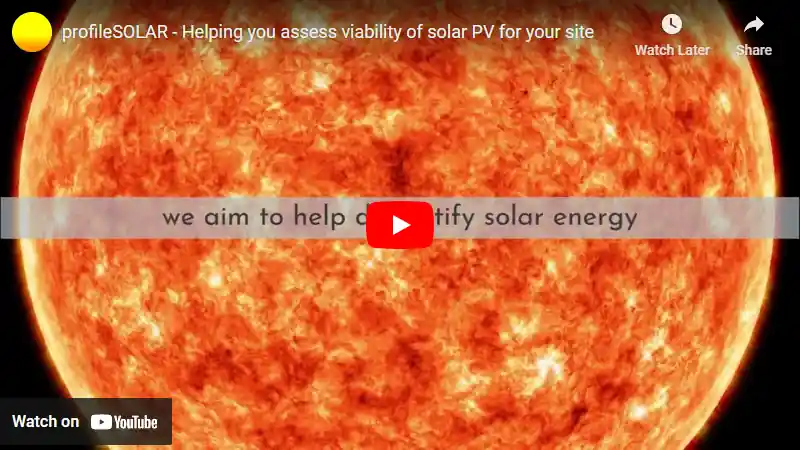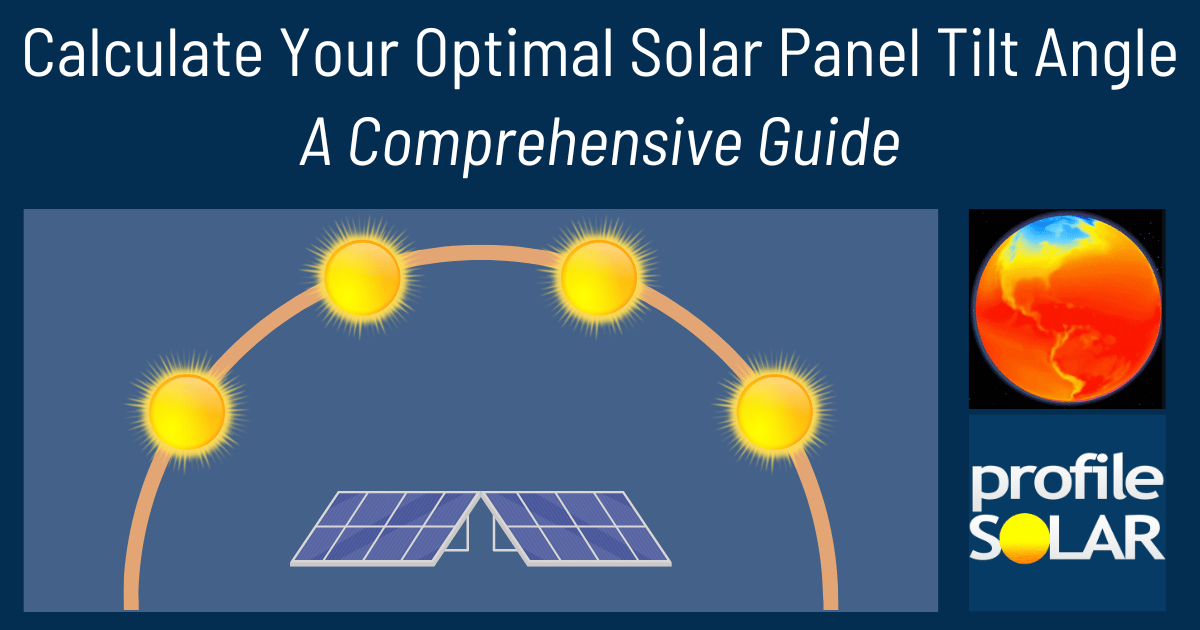

Wingham, New South Wales, Australia is a fairly good location for generating energy through solar panels year-round. This is because it receives a decent amount of sunlight throughout the year.
In simple terms, the amount of energy that can be produced from solar panels depends on how much sunlight they get. In Wingham, during summer you can expect to generate about 6.55 kilowatt-hours (kWh) per day for every kilowatt (kW) of solar panel you have installed. In autumn and winter this falls to around 4.33 and 3.62 kWh/day respectively but rises again in spring to approximately 5.87 kWh/day.
The best time of year to generate solar power in Wingham would likely be during the summer months when there's more sunlight available each day.
If you're installing fixed panel solar installations at this location, tilting them at an angle of 29 degrees towards the North would help maximize their total output throughout the year.
However, there could be certain factors related to environment, topography or weather that might affect how much power your panels can produce here.
For instance, if there are tall trees or buildings nearby that cast shadows over your panels for parts of the day they won't produce as much electricity as they could if they were in full sun all day long.
Weather conditions like heavy cloud cover or dust storms can also reduce their output because these block out some of the sun's light too.
To deal with these issues it's important to choose a spot where your panels will get unobstructed access to direct sunlight for most part of each day.
Also regular cleaning and maintenance checks will ensure dust or debris doesn't build up on them blocking out some light and reducing their efficiency over time.
So overall while Wingham gets enough sunshine throughout most part of each year making it suitable for generating solar power; careful planning regarding placement of panels and regular maintenance will ensure you get the most out of your solar installation.
Note: The Southern Sub Tropics extend from -23.5° latitude South down to -35° latitude.
So far, we have conducted calculations to evaluate the solar photovoltaic (PV) potential in 392 locations across Australia. This analysis provides insights into each city/location's potential for harnessing solar energy through PV installations.
Link: Solar PV potential in Australia by location
Become the exclusive sponsor for Wingham, Australia!
Solar output per kW of installed solar PV by season in Wingham
Seasonal solar PV output for Latitude: -31.8686639, Longitude: 152.3718898 (Wingham, Australia), based on our analysis of 8760 hourly intervals of solar and meteorological data (one whole year) retrieved for that set of coordinates/location from NASA POWER (The Prediction of Worldwide Energy Resources) API:




Ideally tilt fixed solar panels 29° North in Wingham, Australia
To maximize your solar PV system's energy output in Wingham, Australia (Lat/Long -31.8686639, 152.3718898) throughout the year, you should tilt your panels at an angle of 29° North for fixed panel installations.
As the Earth revolves around the Sun each year, the maximum angle of elevation of the Sun varies by +/- 23.45 degrees from its equinox elevation angle for a particular latitude. Finding the exact optimal angle to maximise solar PV production throughout the year can be challenging, but with careful consideration of historical solar energy and meteorological data for a certain location, it can be done precisely.
We use our own calculation, which incorporates NASA solar and meteorological data for the exact Lat/Long coordinates, to determine the ideal tilt angle of a solar panel that will yield maximum annual solar output. We calculate the optimal angle for each day of the year, taking into account its contribution to the yearly total PV potential at that specific location.

Seasonally adjusted solar panel tilt angles for Wingham, Australia
If you can adjust the tilt angle of your solar PV panels, please refer to the seasonal tilt angles below for optimal solar energy production in Wingham, Australia. As mentioned earlier, for fixed-panel solar PV installations, it is optimal to maintain a 29° North tilt angle throughout the year.
| Overall Best Summer Angle | Overall Best Autumn Angle | Overall Best Winter Angle | Overall Best Spring Angle |
|---|---|---|---|
| 15° North in Summer | 38° North in Autumn | 47° North in Winter | 26° North in Spring |
Our recommendations take into account more than just latitude and Earth's position in its elliptical orbit around the Sun. We also incorporate historical solar and meteorological data from NASA's Prediction of Worldwide Energy Resources (POWER) API to assign a weight to each ideal angle for each day based on its historical contribution to overall solar PV potential during a specific season.
This approach allows us to provide much more accurate recommendations than relying solely on latitude, as it considers unique weather conditions in different locations sharing the same latitude worldwide.
Topography for solar PV around Wingham, Australia
Wingham, Australia is located in the Mid North Coast region of New South Wales. The topography around Wingham is characterized by a mix of coastal plains and low-lying hills, with some forested areas. The nearby Manning River also influences the landscape.
In terms of solar PV suitability, areas that are flat or gently sloping with good sun exposure would be ideal. This would typically include open fields or cleared land free from obstructions like trees or tall buildings that could block sunlight.
The coastal plains near Wingham could potentially be suitable for large-scale solar PV installations due to their relative flatness and openness. However, detailed site-specific assessments would need to be carried out to confirm this, taking into account factors such as soil conditions and local climate patterns.
Additionally, it's important to consider infrastructure access (like proximity to power grids), potential environmental impacts (like effects on local wildlife or waterways), and any regulatory constraints when identifying suitable sites for large-scale solar projects.
Australia solar PV Stats as a country
Australia ranks 7th in the world for cumulative solar PV capacity, with 19,076 total MW's of solar PV installed. This means that 10.70% of Australia's total energy as a country comes from solar PV (that's 2nd in the world). Each year Australia is generating 742 Watts from solar PV per capita (Australia ranks 2nd in the world for solar PV Watts generated per capita). [source]
Are there incentives for businesses to install solar in Australia?
Yes, there are a variety of incentives available in Australia to businesses wanting to install solar energy. These include:
1. Renewable Energy Target (RET): The RET provides businesses with financial assistance for installing and operating renewable energy systems such as solar panels. Businesses may be eligible to receive certificates that can be sold or traded on the open market for additional income.
2. Feed-in Tariffs: Some states offer feed-in tariffs which pay businesses for generating and exporting excess electricity from their solar panel system back into the grid during peak demand periods.
3. Solar Credits: The Solar Credits program provides households and small business owners with an upfront discount when purchasing a new solar system, based on the amount of renewable energy generated by the system over its lifetime.
4. Tax Breaks: Small business owners may be able to claim tax deductions on certain expenses associated with installing a solar power system, including installation costs, maintenance expenses and interest payments related to financing arrangements taken out specifically for this purpose.
Do you have more up to date information than this on incentives towards solar PV projects in Australia? Please reach out to us and help us keep this information current. Thanks!
Feeling generous?

Share this with your friends!


Compare this location to others worldwide for solar PV potential
The solar PV analyses available on our website, including this one, are offered as a free service to the global community. Our aim is to provide education and aid informed decision-making regarding solar PV installations.
However, please note that these analyses are general guidance and may not meet specific project requirements. For in-depth, tailored forecasts and analysis crucial for feasibility studies or when pursuing maximum ROI from your solar projects, feel free to contact us; we offer comprehensive consulting services expressly for this purpose.
Helping you assess viability of solar PV for your site
Calculate Your Optimal Solar Panel Tilt Angle: A Comprehensive Guide
Enhance your solar panel's performance with our in-depth guide. Determine the best tilt angle using hard data, debunk common misunderstandings, and gain insight into how your specific location affects solar energy production.

.svg)





